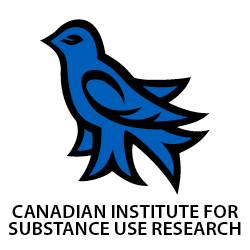The Supreme Court of Canada’s September 2011 decision allowing Vancouver’s supervised injection site, Insite, to keep operating was a critical milestone for harm reduction in Canada. One only has to look at the list of interveners in the case in support of this innovative service to see that it has become a valued and mainstream service in Canada. Canadian health organizations including the Canadian Medical Association, Canadian Nurses Association, Canadian Public Health Association and 11 others saw fit to come before the court to support Insite. But even with this high level of support, scaling up harm-reduction services in Canada remains a challenge.
Harm reduction gained traction as a result of the HIV/AIDS crisis in the early 1980s and played a critical role as a strategy to engage injection-drug users in HIV prevention. Harm reduction’s more recent challenges have elevated the critique of policy-related harms – harm caused by policies that criminalize people who use illegal drugs.
 Harm reduction acknowledges that there are significant risks associated with illegal drugs and also attempts to work towards mitigating harms within the criminalized environment where drug use occurs. This often puts the public-health goals of engaging people who use drugs in conflict with traditional public-safety strategies that rely on disruption of illegal drug markets, and in turn disruption of the lives of people who use illegal substances. Harm-reduction approaches balance these realities and focus on creating safer environments as much as possible within a context of criminalization. Some examples include promoting supervision of consumption or discouraging using drugs while alone, promoting rapid response strategies in the form of peer-delivered naloxone programs and strategies that work towards achieving a kind of détente between health efforts and enforcement practices. Given the context of criminalization, a key goal of harm reduction is to maximize the benefits of public-health interventions and minimize the harm of drug use and the enforcement of drug policy.
Harm reduction acknowledges that there are significant risks associated with illegal drugs and also attempts to work towards mitigating harms within the criminalized environment where drug use occurs. This often puts the public-health goals of engaging people who use drugs in conflict with traditional public-safety strategies that rely on disruption of illegal drug markets, and in turn disruption of the lives of people who use illegal substances. Harm-reduction approaches balance these realities and focus on creating safer environments as much as possible within a context of criminalization. Some examples include promoting supervision of consumption or discouraging using drugs while alone, promoting rapid response strategies in the form of peer-delivered naloxone programs and strategies that work towards achieving a kind of détente between health efforts and enforcement practices. Given the context of criminalization, a key goal of harm reduction is to maximize the benefits of public-health interventions and minimize the harm of drug use and the enforcement of drug policy.
So what should Canada be doing to facilitate the development of a more robust harm reduction approach as a part of a comprehensive response to drug use? We urge governments to begin with a review of current drug policies to determine the benefits and harms to individuals and communities that accrue from the criminalization of drugs and the people who use them.
Other countries have done such an analysis and have decided to eliminate criminalization as a response to possession of drugs for personal use in an effort to maximize the benefit of a public-health approach to drug problems. Portugal (2001) and the Czech Republic (2009), are two examples of jurisdictions that have taken this step. Both have decriminalized all drugs that are deemed to be for personal use. Portugal decriminalized drugs as part of a response to an HIV epidemic and high rates of drug overdose. The Czech Republic did the same as a result of an extensive evaluation of the previous policy of criminalization. Evaluation of the experience in Portugal has shown that results have been positive overall – HIV incidence and overdose deaths have been reduced, police are supportive of the new law as it has given them more meaningful and helpful involvement in steering individuals towards health services, more people are accessing treatment and other health services which were improved as a part of the decriminalization policy. Additionally no negative trends have been seen in terms of increased harms attributed to this policy change.
Achieving a policy shift as significant as decriminalization will take some time. In the meantime, the Canadian Drug Policy Report, Getting to Tomorrow, outlines some possibilities for improving the development of harm reduction in Canada in the short term:
- Acknowledge that harm reduction is much more than supply distribution and is an essential component of a comprehensive public health response to problematic substance use that offers client-centred strategies with health engagement at their core.
- Acknowledge that harm reduction values the human rights of people who use drugs and affirms that they are the primary agents of change for reducing the harms of their drug use.
- Provincial governments can commit to articulating harm reduction strategies across mental health, addictions and infectious disease policy frameworks.
- Where harm reduction language is present within policy frameworks ensure implementation at the community level.
- Support innovation at all levels. An ethic of experimentation will help create an environment where new ideas and novel approaches can be developed and explored.
- Provide leadership to bring health and policing agencies together to get “on the same page” with regard to harm reduction. Opposition by some in the policing community is unfortunate and an unnecessary barrier to scaling up harm reduction programs.
Developing a robust and equitable harm-reduction approach for Canadians will necessitate new thinking about old strategies —thinking that exposes the harms that flow directly from our current policy frameworks and will open the door to new ideas and approaches that are emerging around the world.
Author: Donald Macpherson, Executive Director of the Canadian Drug Policy Coalition
**Please note that the material presented here does not necessarily imply endorsement or agreement by individuals at the Centre for Addictions Research of BC

